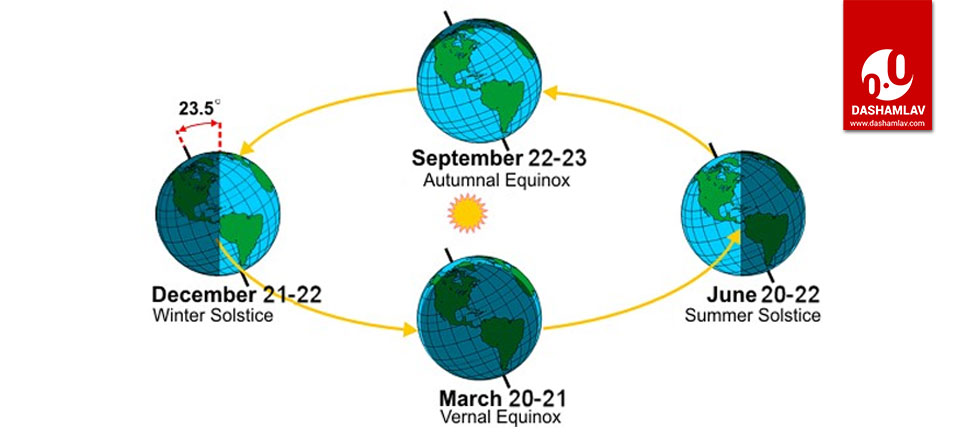We all know that the planet earth takes 24 hours to complete one rotation on its axis and 365 days and 6 hrs to complete one full revolution around the sun. One complete revolution equals one complete calendar year.
A year is divided into various seasons depending on the position of the sun and the earth. These seasons are — Spring, Summer, Autumn, and Winter. These seasonal variations happen as the earth is tilted on its own axis by 23.4° from the plane of its orbit. Due to this axial tilt, either one of the earth poles tips towards the sun while taking a revolution in its elliptical orbit.
The position of earth and the sun plays an important role in determining the length of a day. When the duration of daylight and night time is equal, it is called the equinox. During an equinox, the pole of earth is neither towards nor away from the Sun.
Similarly, when the length of the daylight (with respect to the sunlight received) is the longest and shortest, it is called solstice.

Equinox
- Equinox occurs twice a year in the Northern hemisphere — once in spring and once in the autumn season.
- During the equinox, the plane of the equator passes through the center of the sun’s disc.
- Spring Equinox usually occur on around 20th-21st March. It marks the beginning of longer days and shorter night-time.
- Autumn Equinox takes place around 22nd-23rd September. It marks the beginning of the autumn season with shorter days and longer night-time.
Solstice
- Solstice also occurs twice a year — in summer and winter seasons.
- During Solstice, the Sun reaches its highest point or lowest point at noon and receives maximum or minimum daylight respectively. It accordingly marks the longest day or the shortest day of the year.
- The sun is directly above the Tropic of Cancer during Summer Solstice and above the Tropic of Capricorn during the Winter Solstice.
- While summer solstice demarcates the longest day of the year, the winter solstice demarcates the shortest day of the year.
- In the Northern hemisphere, the summer solstice occurs around 21st-22nd June. Similarly, the winter solstice in the Northern Hemisphere occurs around 22nd December every year.
Use the citation below to add this article to your bibliography
"Equinox vs. Solstice: Meaning and Difference along with Diagram." Dashamlav.com. Web. 12 June 2025. <https://dashamlav.com/equinox-vs-solstice-difference/>
Dashamlav.com, "Equinox vs. Solstice: Meaning and Difference along with Diagram." Accessed 12 June 2025. https://dashamlav.com/equinox-vs-solstice-difference/
"Equinox vs. Solstice: Meaning and Difference along with Diagram." (n.d.). Dashamlav.com. Retrieved 12 June 2025 from https://dashamlav.com/equinox-vs-solstice-difference/
